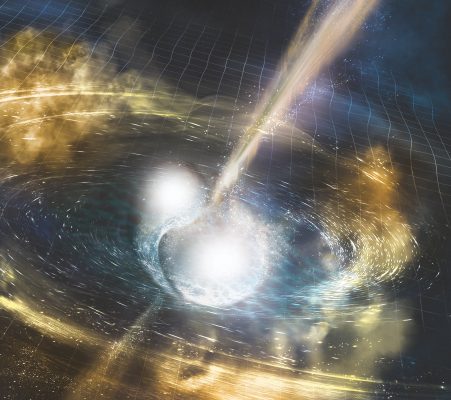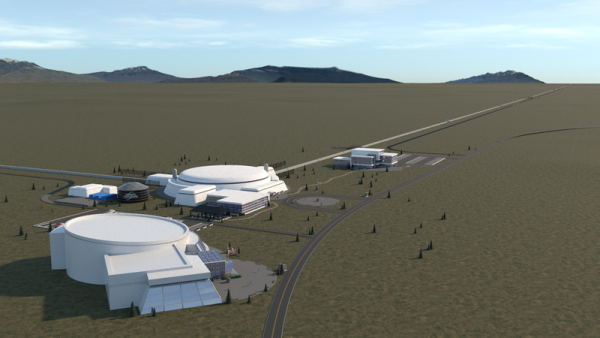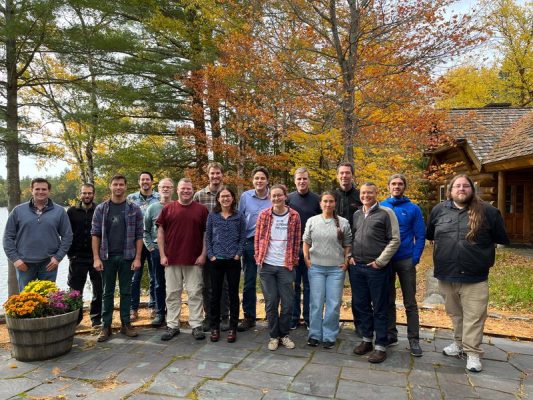
Billions of years ago in a distant galaxy, two black holes collided sparking one of the universe’s most extreme cosmic events. The occurrence was so powerful that it bent the fabric of spacetime, sending out ripples called gravitational waves.
These waves would eventually be detected on Earth by Advanced Laser Interferometer Gravitational-Wave Observatory (LIGO) detectors, with Syracuse University faculty playing a leading role in that monumental discovery. While members of the University’s Gravitational-Wave Group took a moment to celebrate the incredible feat, they immediately began wondering how they could build a new observatory that would allow them to explore even more of the Universe with gravitational waves.
Enter Cosmic Explorer, a next-generation gravitational-wave observatory being devised by the Syracuse University Center for Gravitational Wave Astronomy and Astrophysics (CGWAA). Established this fall, CGWAA is a hub for students and faculty at the University to play a principal role in the design and operation of gravitational-wave observatories. Working with scientists from Massachusetts Institute of Technology, Pennsylvania State University, California State University, Fullerton, and the University of Florida, the CGWAA team hopes that Cosmic Explorer will be searching the universe by the mid-2030s.

To put the capability of Cosmic Explorer in perspective, while Advanced LIGO has made around 100 detections of colliding black holes since 2015, Cosmic Explorer will be able to detect every collision in the visible universe–about 100,000 per year, or one every five minutes. Cosmic Explorer will also see around one million neutron star mergers each year, allowing scientists to understand the nature of nuclear matter and the creation of heavy elements.
Gravitational wave detectors, like Cosmic Explorer, are large-scale interferometers. Interferometry is an extremely sensitive measurement technique that uses mirrors, laser beams and interference (the adding or canceling of combined beams) to measure the displacement of a mirror caused by the ripples from gravitational waves. The advanced detectors help researchers map black holes in the universe, something not previously possible with telescopes since, unlike stars, black holes do not produce light.

In October 2022, Cosmic Explorer project collaborators came together for a proposal-writing workshop at Syracuse University’s Minnowbrook Conference Center, resulting in over $9M of federal funding to the project. Syracuse University is receiving $1.64M of funding over the next three years as part of that NSF commitment.
Among the researchers from the College of Arts and Sciences who recently received funding for their work with Cosmic Explorer are Stefan Ballmer, professor of physics and founding director of CGWAA; Georgia Mansell, assistant professor of physics; Craig Cahillane, research professor of physics; and Josh Russell and Christopher Scholz, professors in the Department of Earth and Environmental Sciences, whose grant will involve site evaluation for the proposed observatory.
“Without the support of NSF, this important work would not be possible,” says Ballmer. “When we established the Center for Gravitational Wave Astronomy and Astrophysics, the idea was to strengthen Syracuse University’s status as a pioneer in the field of gravitational wave detection. These awards from the NSF affirm that commitment and will establish the center as a key player in enabling the Cosmic Explorer project to come to fruition.”
To read the full story, visit the College of Arts and Sciences website.



